Modern work demands long hours in front of computers, but our bodies weren't designed for static sitting. Poor posture creates muscle imbalances, compresses spinal discs, and restricts circulation. Over time, these changes become structural, leading to chronic pain conditions that require professional intervention.
Regular movement breaks reset your posture, activate dormant muscles, and counteract the negative effects of prolonged sitting. These exercises specifically target the muscle groups most affected by desk work, providing immediate relief and long-term protection.
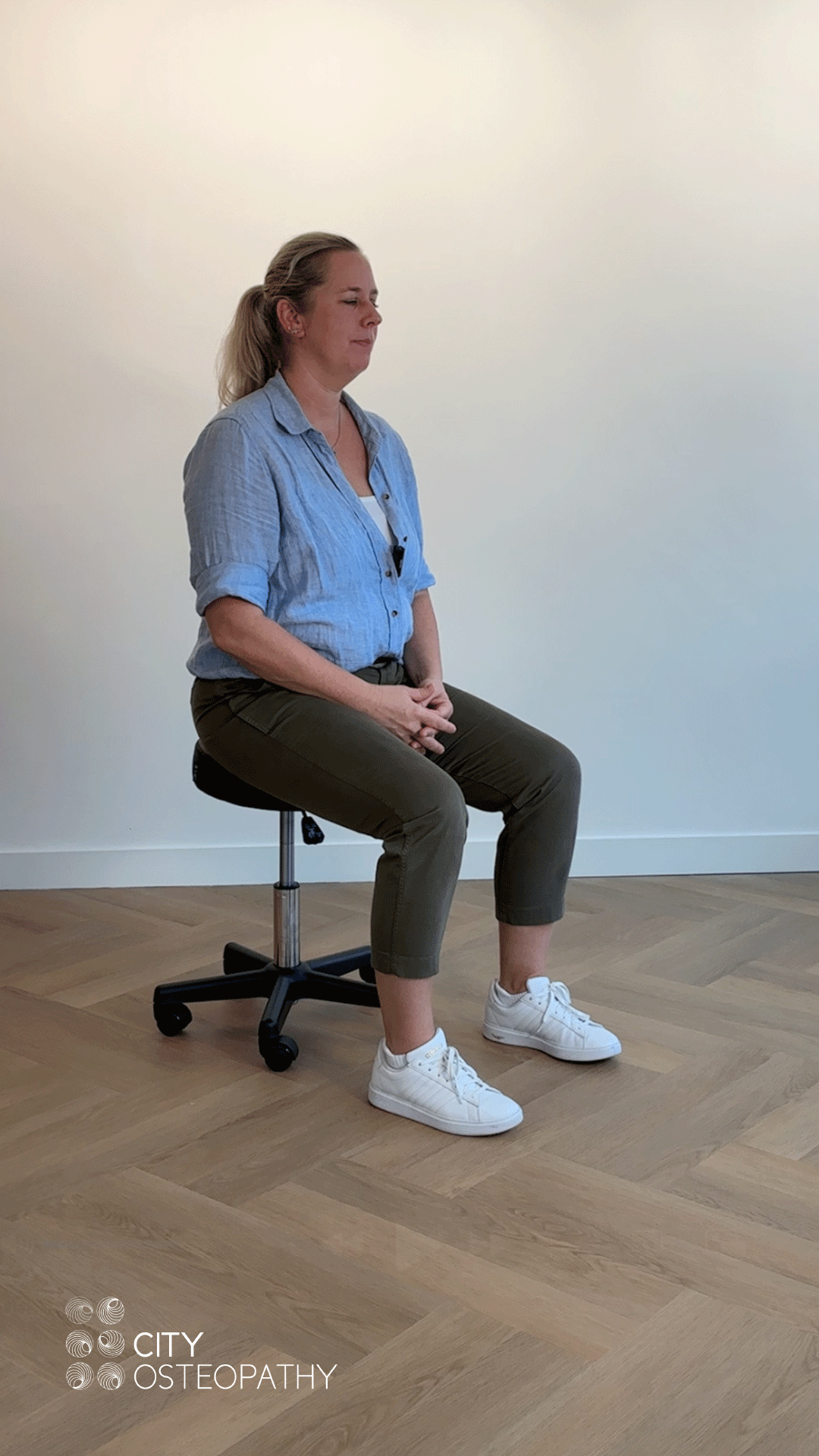
1. Chin Tucks
Gently pull your chin back toward your neck, creating a double chin appearance. Hold for 5 seconds, then release. This exercise counteracts forward head posture and strengthens deep neck flexors.
Our insight: A forward head posture increases cervical spine stress by up to 10kg!
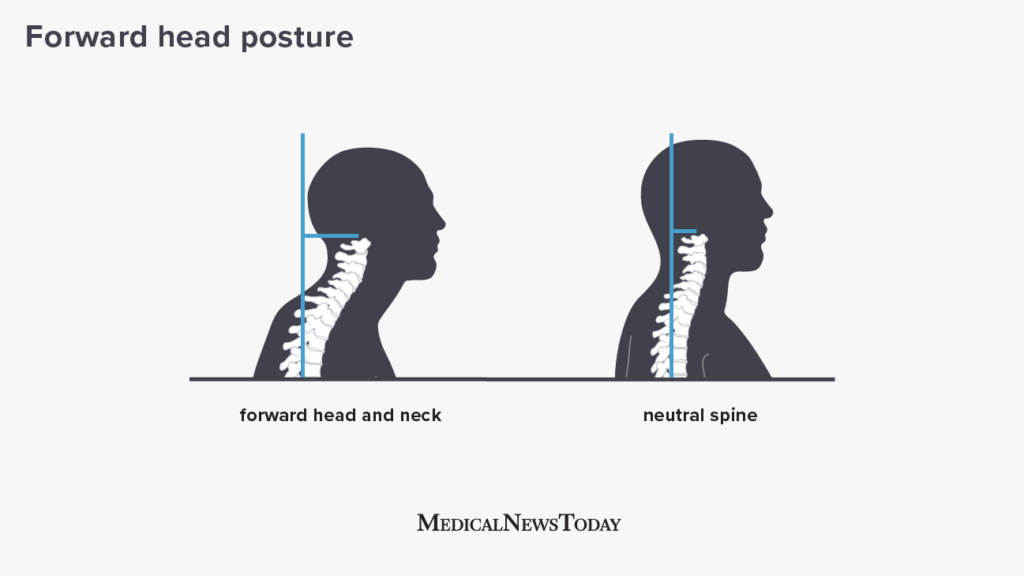
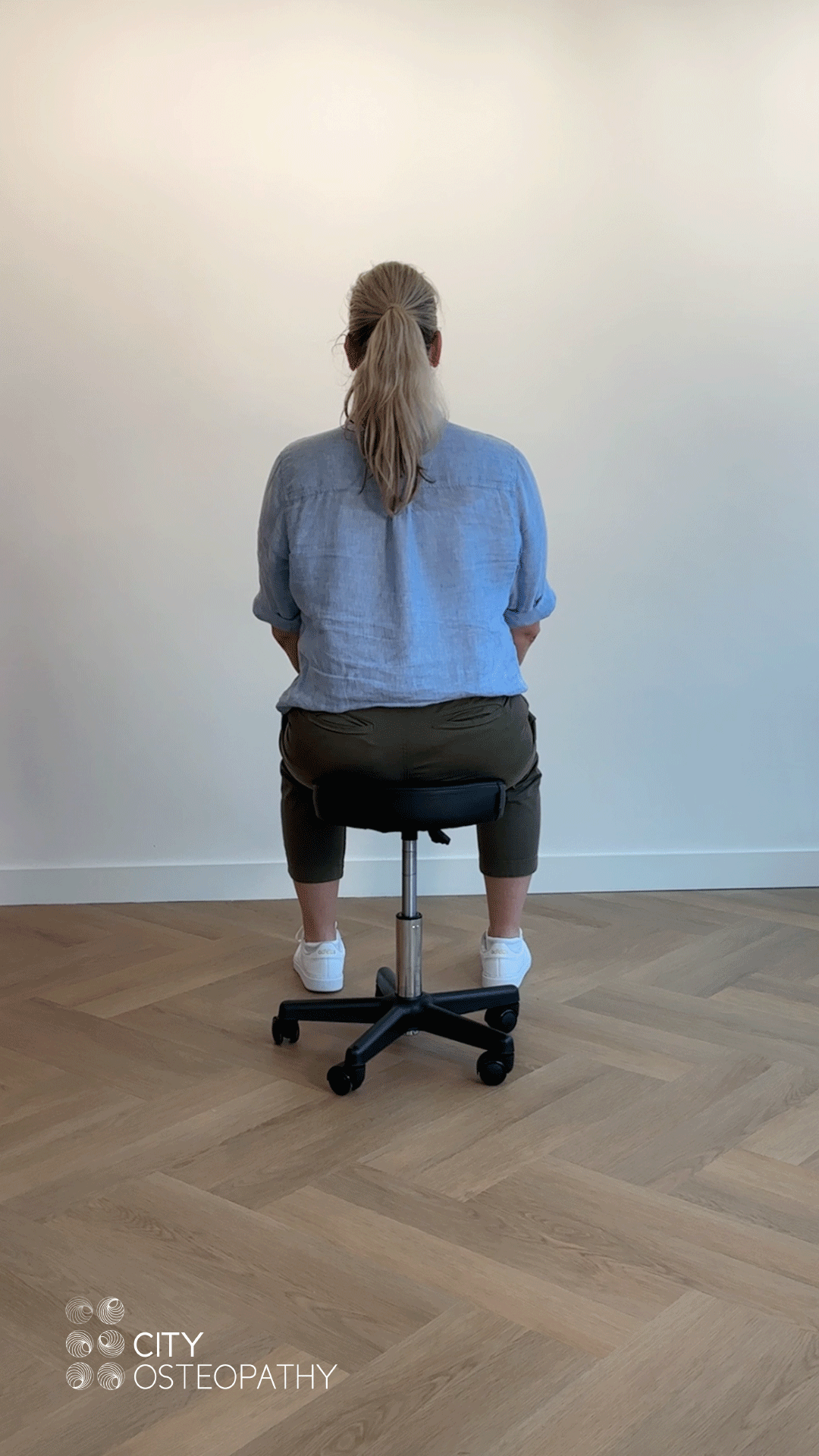
2. Shoulder Blade Squeezes
Pinch your shoulder blades together as if holding a pencil between them. Hold for 5 seconds, feeling the muscles between your shoulder blades activate. This counters rounded shoulder posture.
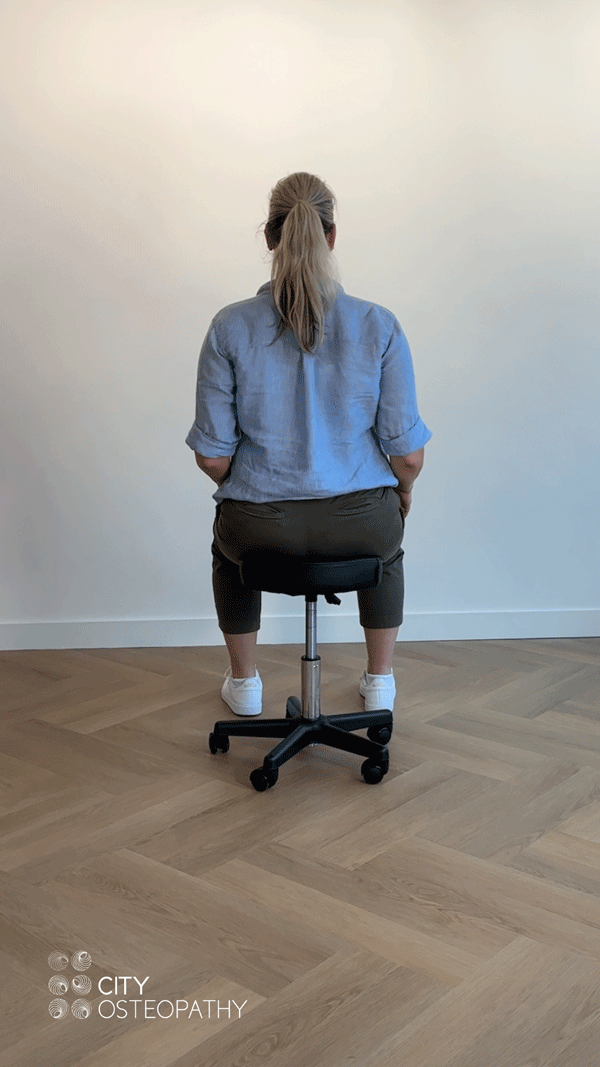
3. Shoulder Rolls
Perform small backward rolls, lifting shoulders up, back, and down. Complete 5 slow, controlled movements. Forward rolls can worsen poor posture, so always roll backward.
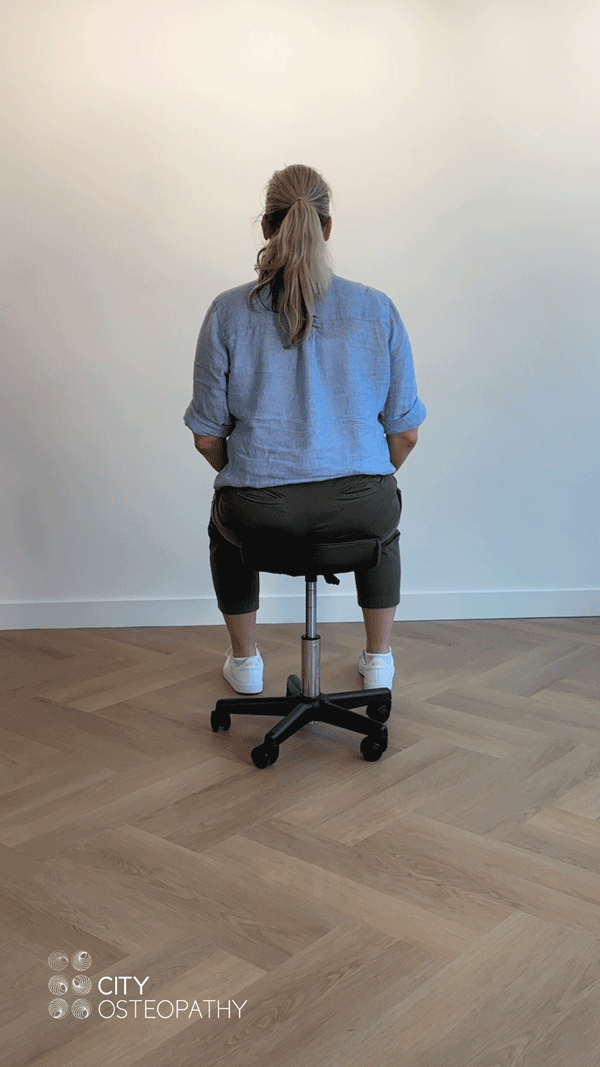
4. Neck Side Stretches
Gently tilt your head to one side, bringing your ear toward your shoulder. Hold for 15 seconds each side. This releases tension in the upper trapezius muscles that commonly tighten during computer work.
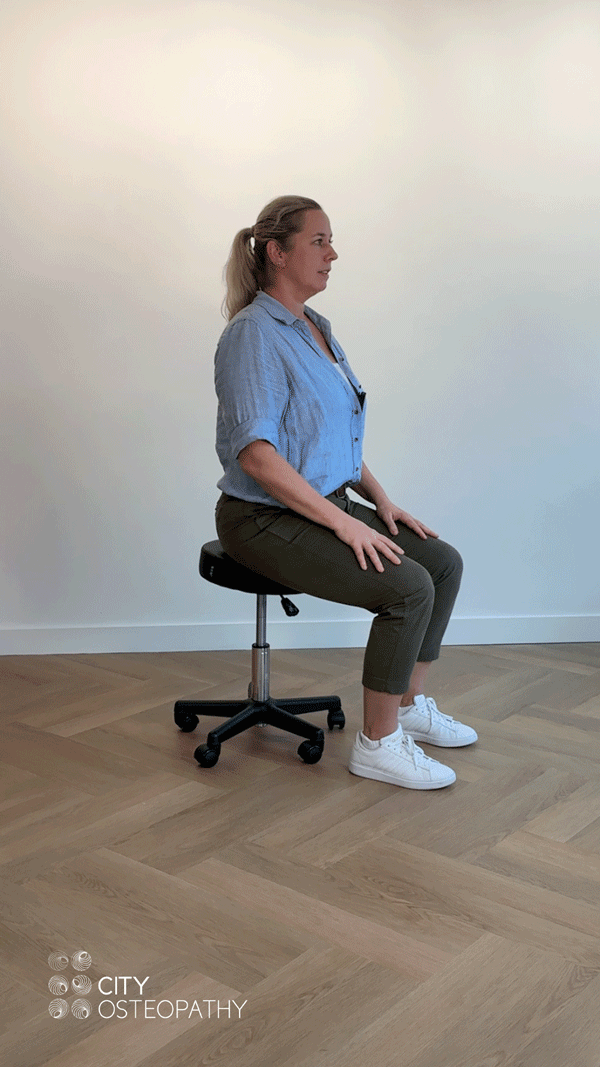
5. Chest Lift
Sit taller and gently lift your chest while drawing shoulder blades down and back. This opens compressed chest muscles and activates postural stabilisers.

6. Neck Release Twists
Slowly turn your head left and right, holding each position for 10 seconds. This maintains cervical spine mobility and reduces muscle stiffness from static positioning.
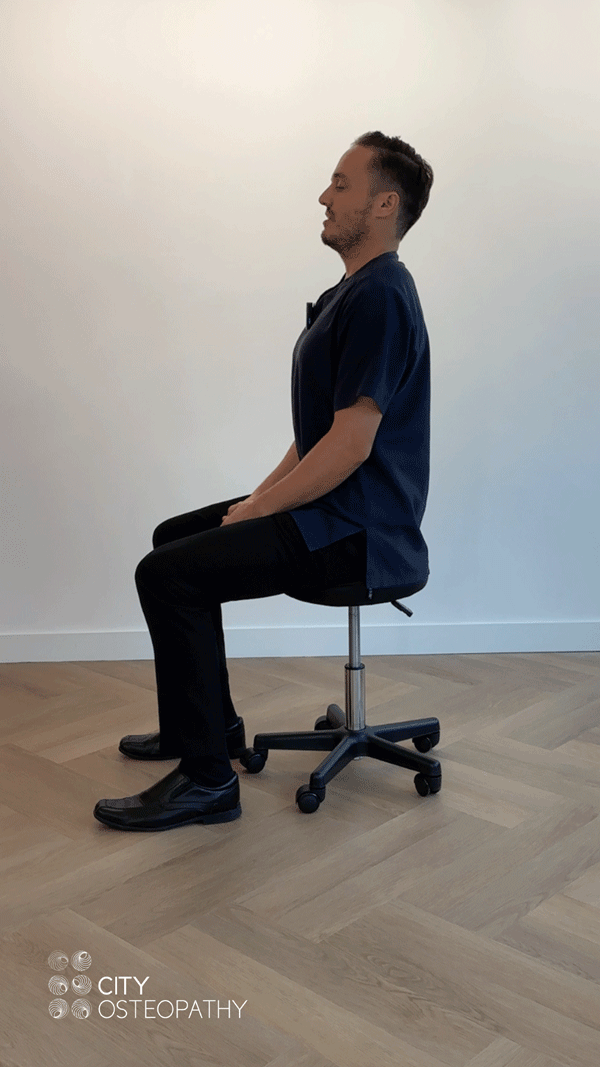
7. Seated Posture Reset
Sit back in your chair, engage your core muscles, and align your spine in neutral position. This is your baseline posture - return to it frequently throughout the day.
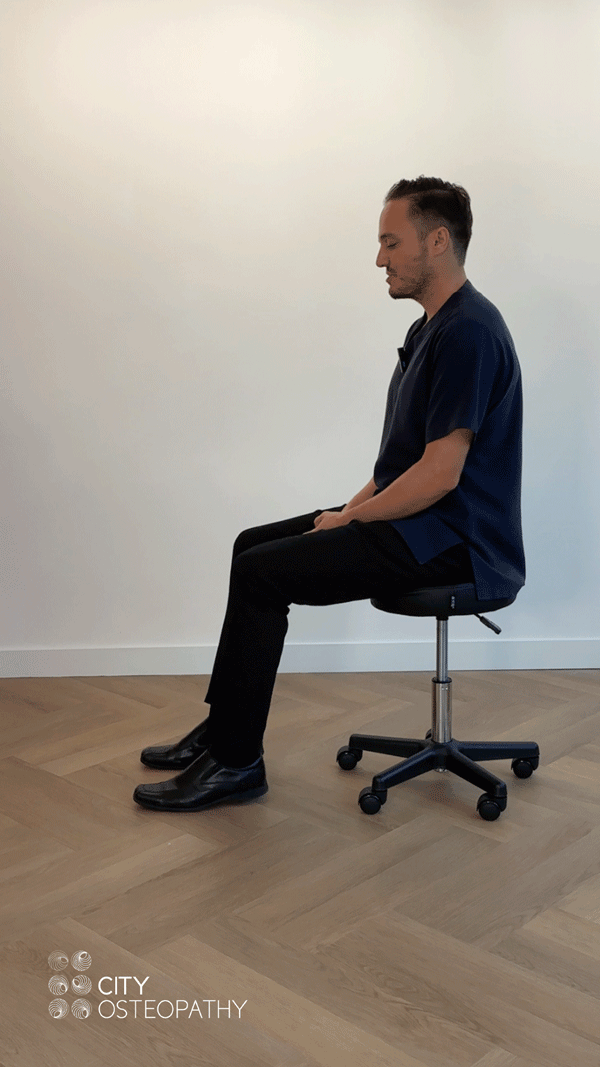
8. Ankle Flexes
Point and flex your feet under your desk. This simple movement activates your calf muscle pump, improving circulation and reducing leg swelling from prolonged sitting.
9. Seated Pelvic Tilts
Gently rock your pelvis forward and backward, finding a neutral position. This maintains lower back mobility and prevents stiffness in the lumbar spine.
10. Glute Activation
Tighten your buttock muscles and hold for 5 seconds. Prolonged sitting "turns off" glute muscles, leading to hip dysfunction and lower back pain.
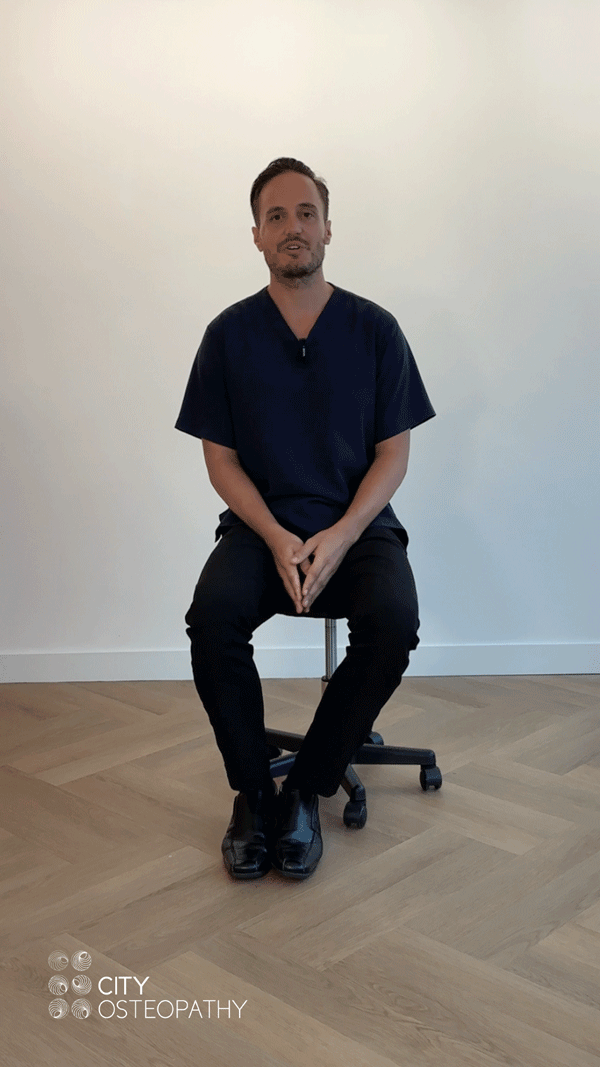
11. Wrist Stretches
Extend one arm forward, flex your wrist up and down, holding each position for 10 seconds. This prevents carpal tunnel syndrome and maintains wrist mobility.
12. Seated Deep Breathing
Take slow, controlled breaths for 30 seconds, expanding your ribcage fully. Deep breathing activates core stabilising muscles and reduces stress-related muscle tension. Breathe in with a count of 4 and slowly breathe out to a count of 7.
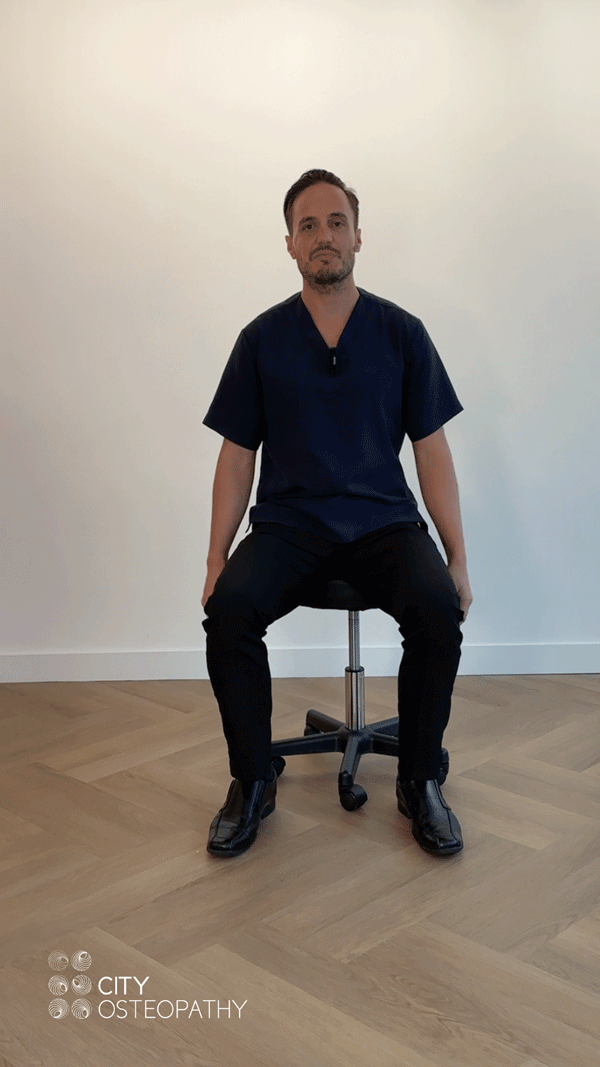
13. Shoulder Shrugs
Lift shoulders toward your ears, hold briefly, then slowly release. This relieves upper trapezius tension and improves shoulder blade mobility.

14. Seated Spinal Extension
Gently arch your back while sitting tall, opening compressed spinal segments. This counteracts the flexed posture that dominates desk work.

15. Eye Level Check
Adjust your monitor height so your eyes are level with the top third of the screen. Reset your head position in neutral. Proper screen height prevents neck strain and forward head posture — small adjustments like this make a big difference. Learn more about creating an ergonomic workspace.
Creating Lasting Change
Performing these exercises 2-3 times daily prevents postural dysfunction from becoming permanent. Set reminders on your phone or computer to ensure consistency - your spine will thank you.
When to Seek Professional Help
While these exercises are highly effective for prevention and early intervention, established postural problems often require professional treatment. Our osteopathic team specialises in correcting structural imbalances and can create personalised exercise programmes for your specific needs.
Comprehensive Postural Care in Hong Kong
At City Osteopathy Integrated Health, we combine hands-on osteopathic treatment with targeted exercise prescription to address both the symptoms and underlying causes of postural dysfunction. Our approach includes workstation assessments, ergonomic recommendations, and ongoing support to keep you pain-free.









